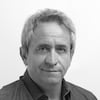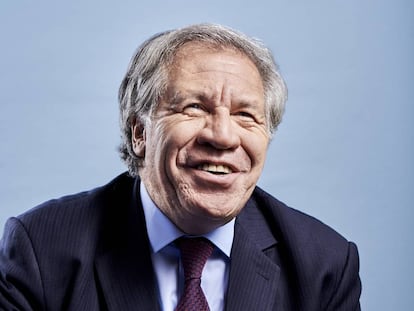The exorcism of ‘Charlie Hebdo’ survivor Philippe Lançon
On January 7, 2015, the Kouachi brothers burst into the offices of the satirical publication ‘Charlie Hebdo’ in Paris, armed with assault rifles. Shouting, “Allah is great!” they killed 12 people. The writer and journalist Philippe Lançon suffered terrible injuries to his face and subsequently spent nine months in hospital, undergoing surgery 17 – going on 18 – times. He then returned to ‘normal life’, which is, of course, far from ‘normal’. “It’s not the same because I am no longer me,” he explains. His book ‘Le Lambeau,’ which received critical acclaim in France, has acted as a kind of exorcism
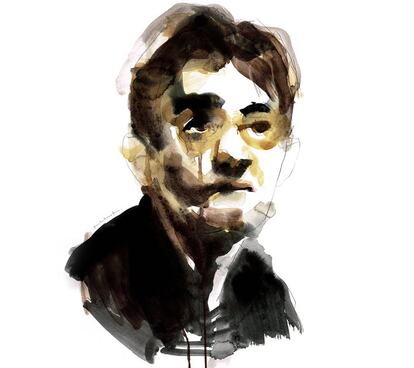
On a winter morning in 2015, Philippe Lançon, author of three novels and one of the most respected cultural critics in France, had the lower half of his face blown away by two bullets fired from a Kalashnikov .357 Magnum. He was shot in the newsroom of the satirical weekly Charlie Hebdo, located on Rue Nicolas-Appert in the 11th arrondissement in Paris. Several of his closest friends, including the illustrators and columnists Cabu, Wolinski, Charb and Bernard Maris, were killed in the attack. Lançon survived but he lost his face from the upper lip down. He spent nine months in the Salpêtrière and Les Invalides hospitals. He is on his 18th facial operation. The doctors took his fibula bone to reconstruct his jaw. The suffering continued. Morphine and Bach helped. He left Paris and published Le lambeau.
In 500 pages, this brave writer who calls things by their name has woven coincidences, terrifying experiences, consequences, reflections and lessons into a narrative that leaves the reader reeling, but also with a strong desire to meet Lançon in person. That wish came true for this particular EL PAÍS journalist on a sweltering day in Rome, where he found Philippe Lançon sitting inside a pretty bar in the Italian capital. This is where he withdrew with his sentimental partner when he fled Paris in a bid to escape the constant reminders of his ordeal. And this is where he wrote the better part of Le Lambeau, which initially amounted to a tentative return from death; and subsequently a return to life, or at least a partial one, as becomes evident from hearing the man himself.
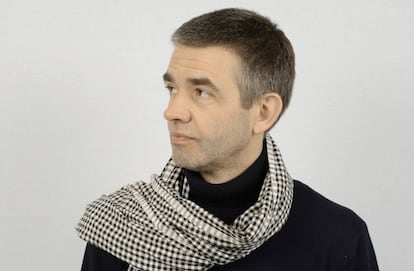
The ceremonial return
“I return bit by bit, from a distance, to a life that is not the same because I am not the same,” he explains in perfect Spanish. “There is a Cuban bolero that says, ‘With you but at a distance’ and I am a bit like that. On the one hand, I am with the person I was and, on the other, I am with the person I am today, here in Rome. There are different ‘I’s; the one I was before the attack; the person I was during the year following the attack; the convalescent I who came into being a year after the attack; the I, writer who is, as Proust said, the product of the other ‘I’; and, finally, there is the man I am becoming now who is someone I still don’t know very well.”
The last chapter of the book is in fact called The Returns. In it, he makes an inventory of what happened and a diagnosis of what is to come, beyond what is directly related to himself as the victim. “It’s strange,” he says. “Few people get to be reborn during their fifties, which is what has essentially happened to me… and I don’t think this is a psychological construction. The idiosyncrasy of the attack is a violent and completely unexpected incursion that destroys the continuity of life, sometimes to the point of death, sometimes just to the point of injury, whether that be physical or psychological. And you are reborn. Because there is something that was destroyed, and I am not talking about the physical here, but about the existential. An attack produces an existential wound. It’s a personal wound but it’s also a collective one.” He alludes in his pages to “a collective violation” and goes on to explain, “It’s perpetrated precisely for that reason, and in that sense it’s a very well designed act.”
Suddenly I heard this dry sound. Crack! Crack! Crack! Like firecrackers. And I knew that someone was killing all of my friends
Asked if he has tried to understand the terrorists, Lançon replies, “The truth is that they don’t interest me much, for better or worse. I believe that those who attacked us were poor senseless souls. I believe that monsters filled the vacuum in their minds, ghouls of the sort that Goya painted, which were put there by actual people, people who are conscious of what they are doing, of serving the Islamic State and all that. They changed my existence. They changed me. They did away with the other Philippe Lançon. It was very hard. I don’t feel hatred towards the Kouachi brothers. I know that they are a product of this world, but quite simply, I can’t get my head around them.”
Despite the fact that he lost his former identity, Lançon maintains that he has never considered suicide. Asked whether he is a Titan, he replies, “Not at all. One’s character develops through circumstances.”
Operating and writing
Philippe Lançon has already been through 17 surgeries. If everything goes according to plan, the complete recovery – if such a thing can exist in these circumstances – should take another year. “They still have to give me a new prosthesis and in my case that’s complicated. The jaw was completely reconstructed using the fibula bone and the implants don’t hold as well as with a normal jaw. And if you don’t have implants, you don’t have a prosthesis,” he explains.
There is, he says, a common denominator between his job as a writer and the reconstructing work of the surgeons, which has to do with tortuous processes. “Writing is a very long road, as is repairing a jaw. In both instances, you have to be patient; now the doctors say I am on the home stretch and that is a little like being on the last leg of writing a book. You correct and correct, you take things out and put things in… you get it right and you get it wrong… I find there’s a very obvious and personal parallel between writing and surgery.”
Knowing what to take out, simplifying the text and getting straight to the point – that, according to Lançon, is what writing is all about. When he first started the book, he had to break off. “It was hard to keep it simple. I was being stylized, I was being literary, and that wasn’t what I wanted,” he explains. “I would like to write more simply, taking out more; often one doesn’t have that much to say, you know? Or just to keep quiet. When you realize that, in fact, you don’t have that much to say, you shut up. Taking things out is also writing. We tend to overwrite. Who knows, maybe I wrote too much in this book as well…”

The vampires
“The patient is a vampire,” writes Lançon in Le Lambeau, referring to the exhausting and intense range of attitudes that anyone in a hospital bed can observe with respect to the hospital staff, family members and friends. Asked if the writer is also like a vampire, Lançon replies, “Of course he is, but not in real time. There’s a difference. The patient tries to feed off everything and everyone he can at all times. Of course, the writer absorbs everything, but he sets it by for later. My situation was not like that. I was living in the moment; I was fighting to survive. A writer sucks from life because his mission is to reconstruct it in a literary format. If he doesn’t suck it in, how can he spit it out? That is what creation is.”
Lançon did not even consider transforming his experience into such a creation, or any creation at all, while he was still hospitalized. “It was impossible to write fiction after what happened,” he says. “But it’s true that at a certain moment, a project began to take shape in my head in the form of a book, but that was later. I didn’t think about writing a book until a year after the attack. Although I actually began writing it two years later.”
Journalism and literature
Le Lambeau could be translated as ‘Tatters’ – an idea Lançon borrowed from French dramatist Jean Racine’s Athalie: “And tatters soaked in gore, of hideous limbs, That dogs, devouring, fought for with each other.” It is not a novel. Nor is it an essay. There is a certain poetry to it, but obviously it is not a poem. Nor is it an autobiography, or a memoir in the strictest sense of the word. Probably the highly acclaimed Le Lambeau, which is a collection of facts, context, whys and wherefores, interpretation and declarations, is closest to a chronicle, which also manages some harsh criticism of today’s journalism.
“There are very few good chroniclers today because there are those who confine themselves to important current affairs and the morality of the day, and others who are caught up in a kind of dandyism, posing as clever and taking the opposite stance. In short, some conform to society and others to their own public persona.”
Lançon explains that his book is a hybrid: the product of someone who has been a journalist for 30 years but who is also a writer. “Everything is mixed up in it: journalism and literature. Journalism has given me the ability to write objectively. From the moment I opened my eyes in the resuscitation room, part of me became a journalist of my own experience, not just in order to relate what had happened to me but also to those around me. I have tried to offer the reader the experience of someone who has lived through a terrorist experience personally, but without self-pity, avioding the spirit of that beautiful verse by [Spanish writer] Quevedo that says, ‘The internal cry grows into a deluge’.
Faithful to his school of training and to the individuals who taught him, this chronicler of theater, literature, music and art adds, “I believe all this is the result of 30 years of journalism in a place like Libération, a daily where it was possible to develop the finest form of journalism: objective, precise, investigative, lacking a moral stance, adhering to the facts with a certain joy in writing and living and, above all, an attempt to restore the lives of those who were ignored during the 1980s in France; the marginalized, the prisoners, the slum dwellers, abused women, homosexuals...”
The attack

Philippe Lançon writes on page 81 of Le Lambeau:“The dead were almost holding hands. One’s foot was touching another one’s belly, and the latter’s fingers were grazing the face of a third, who was leaning towards the hip of a fourth, who appeared to be staring at the ceiling, and all of them, in this posture, as never before but as forever after, became my comrades.”
These words belong to the chapter entitled Among the Dead. It’s the chapter that follows The Attack. It is only one chapter among the book’s 20 chapters, just 11 pages out of 500; this is the only part that focuses on the raw horror of the attack carried out by the Kouachi brothers. The horror is, however, everywhere evident in the book. In the preface, for example, Lançon reconstructs the eve of the massacre with a chilling detachment that borders on the scientific. He had gone to the theater to see a Shakespeare play. The next morning he wrestles with whether or not to go to the Charlie Hebdo newsroom. His description of the moments prior to the attack makes the reader feel as though they must have been cursed. You almost want to travel back in time and grab him and whisper in his ear, “Don’t go to Charlie… don’t go!” But he did go, and no one is more aware of the consequences than Lançon himself as he comes to terms with the devastation on both his body and soul.
“I didn’t decide to go to the meeting at Charlie Hebdo right until the last moment,” he recalls. “I had two articles to write for Libération, I wasn’t in a good mood and I didn’t want to go… but as it was the first meeting of the year, in the end I did go. And, of course, that decision completely changed my life. I have thought a lot about what my life would be like now if I had gone to Libération and not to Charlie. That’s inevitable.”
Lançon takes the reader from the eve of the attack to the attack itself and far beyond. Now, sitting in the bar opposite a park in Rome, he goes back to the attack. “It was all like a slow-motion movie,” he says in a delicate voice. “Suddenly I heard these dry sounds. Crack! Crack! Crack! Like firecrackers. And I knew that someone was killing all my friends; and that they were very likely going to kill me, too. I decided to get down on the floor, but I did it very slowly because oddly I was scared of throwing myself down and getting hurt. In a situation like that, you don’t realize what’s happening and when you do, it’s probably too late. I realized that something really serious was happening when I saw Franck trying to take out his gun [Franck Brinsolaro, the bodyguard of Stéphane Charbonnier aka Charb, the editor of Charlie Hebdo, who died in the attack]. I saw the legs of one of the killers under the table and they were coming closer. I opened one eye and closed the other and waited for the coup de grâce. That’s when the surreal got mixed up with the absolutely real. Will they kill me? Am I already dead or am I still alive? All those questions went around my head,” he says.
What was left unsaid

When a book like Le lambeau comes out, there will always be those who think the writer has gone too far; that there are things that are better left unsaid and that certain details are more than the reader can be expected to bear. But it so happens that, aside from the moral reasons driving Lançon, he was adhering to a strict non-negotiable rule, according to which certain ‘unbearable’ things needed to be told and others needed to be left out. “I have not described absolutely everything on ethical grounds, basically,” he explains. “In the book, I write about everything I saw directly from the newsroom at Charlie Hebdo where the attack took place, but only what I myself saw. That’s why I describe the brains of Bernard [Lançon describes in detail how the brains of his friend the economist and columnist Bernard Maris spill out of his skull] because it was the first thing I saw and it was like the gate that opened onto hell and later purgatory. That image, which stayed with me for days and days, was the point of entry for the rest of the book, so I couldn’t not talk about it. There were friends of mine dead and with their faces totally destroyed in that newsroom. I know that because I read the police report but I didn’t see them and so I don’t write about it because it would have felt indecent. Nor do I write about certain things in the hospital because they are personal things that my surgeon or the nurses told me and I don’t have the right to write about them.”
The silence
From the time of the attack until the book’s publication, Lançon only granted one interview, to the radio station France-Inter, and for just ten minutes. He wanted silence. “It was essential to be alone with my experience, to understand it and to search for the literary form to reconstruct it,” he says. “I couldn’t spend my energy on words that would have been superficial. And after the book came out, I gave scarcely more than two or three interviews and now there’s this one; no television on account of a very concrete piece of advice the police gave me in 2015: ‘Don’t go on TV, don’t have your photo taken and you’ll live more peacefully’. And I agree with them.”
This all seems pretty logical. Lançon trusts the police like a blind man might trust his guide dog. Four officers, armed with sub-machine guns, stood on either side of his hospital door 24/7 for eight months, as technically Lançon remained a target for the terrorists.
The silence has become a sort of refuge. “I didn’t watch television, nor did I listen to the radio,” says Lançon who has in the past talked about the loneliness of being alive. “I shut myself inside a kind of cocoon, as though I were a child. Many media outlets tell you things like ‘you are a victim and you have a right to feel like this, and those who have hurt you are this and that…’ But I don’t believe that would have helped me. Self-pity is not good. A victim of terrorism needs to be strong and mustn’t think that the group, the State or the family are going to provide everything. You have to fight. But it’s very hard. It’s not easy to be a survivor; you are split between the happiness of still being here and the guilt of having been spared.” However, Lançon adds, “I have no intention of turning into a stuffed parrot on the barrel of a Kalashnikov.”
The hospital
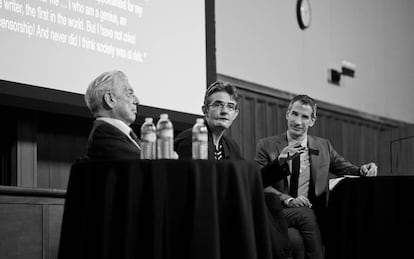
In Le Lambeau, Lançon talks about the hospitals as “Darwinian places”. The description of his time in La Salpetrière and Les Invalides is quite shocking. “I was better equipped than others, poor devils, who had little idea that they had arrived in hospital, victims of whatever – an accident, or a fight – and they were shut in their rooms and didn’t emerge for days, weeks or whole months, watching TV and being consumed. I had a certain amount of culture. I read a lot, I reflected, I had family who did much to help me and I used seduction as a weapon. In hospital, I seduced people to get what I needed. I tried to be likeable. But to be genuinely likeable you have to love people. If I wanted to be liked by the matron, I had to get interested in her and her life, and it worked. And, in fact, I still love those people.”
The victim: Charlie Hebdo
“The absence of solidarity with Charlie Hebdo wasn’t just a professional and moral disgrace. By isolating it and holding it up for inspection, it also helped to make Charlie a target for the Islamists,” writes Lançon, referring in this section of the book to The Respectful Prostitute by Jean Paul Sartre to address the “professionals of morality and respect, or rather, the prostitutes of respect” who, in the case of Charlie Hebdo as well as in the case of the Danish illustrators who sketched caricatures of Muhammad, had just one objective. This, in Lançon’s words, was: “To make us believe that to live in peace and without problems, it is better not to draw a certain prophet.” And that, he says, was an attitude seen across the political board. “I was able to establish once more to what degree the world of the far left is infused with contempt, rage, self-deception, an inability for nuance and degrading invective,” he says. “In this respect, at least, they are no better than the far right.”
English version by Heather Galloway.
